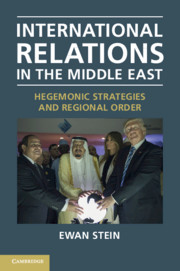Book contents
- International Relations in the Middle East
- International Relations in the Middle East
- Copyright page
- Contents
- 1 Introduction
- 2 The Order of Notables (1919–1952)
- 3 Arab Neutralism and the Cold War (1952–1967)
- 4 Towards a Middle Eastern State Conglomerate (1967–1979)
- 5 Regional Order in Khomeini’s Shadow (1979–1990)
- 6 A New Middle Eastern Order? (1990–2001)
- 7 The Middle East and the Global War on Terror (2001–2011)
- 8 Regional Order after the Arab Uprisings (2011–2020)
- 9 Conclusion
- Bibliography
- Index
8 - Regional Order after the Arab Uprisings (2011–2020)
Published online by Cambridge University Press: 28 January 2021
- International Relations in the Middle East
- International Relations in the Middle East
- Copyright page
- Contents
- 1 Introduction
- 2 The Order of Notables (1919–1952)
- 3 Arab Neutralism and the Cold War (1952–1967)
- 4 Towards a Middle Eastern State Conglomerate (1967–1979)
- 5 Regional Order in Khomeini’s Shadow (1979–1990)
- 6 A New Middle Eastern Order? (1990–2001)
- 7 The Middle East and the Global War on Terror (2001–2011)
- 8 Regional Order after the Arab Uprisings (2011–2020)
- 9 Conclusion
- Bibliography
- Index
Summary
The rise of the Muslim Brotherhood in Egypt and Syria raised the prospect of a Turkish-led regional order, backed by Qatari economic power, and based upon the regional ideological co-dependencies of the AKP. At the same time, the renewed potential for a grand bargain between the United States and Iran held out the possibility that empowered Iranian reformists might substitute integration into Western economic and security frameworks for the Axis of Resistance. This chapter first examines the ways in which Turkey and Qatar sought to consolidate a new regional order based on alignment with Western-friendly Islamist governments. It then elaborates upon the counterrevolutionary forces within the region, emanating from both pro-Western and Axis of Resistance actors, that militated against the realisation of a new regional order. The final section of the chapter sketches the main features of a restored regional order based on authoritarian resurgence and sectarianised antagonisms across all pivotal powers in the region.
Keywords
- Type
- Chapter
- Information
- International Relations in the Middle EastHegemonic Strategies and Regional Order, pp. 183 - 208Publisher: Cambridge University PressPrint publication year: 2021

